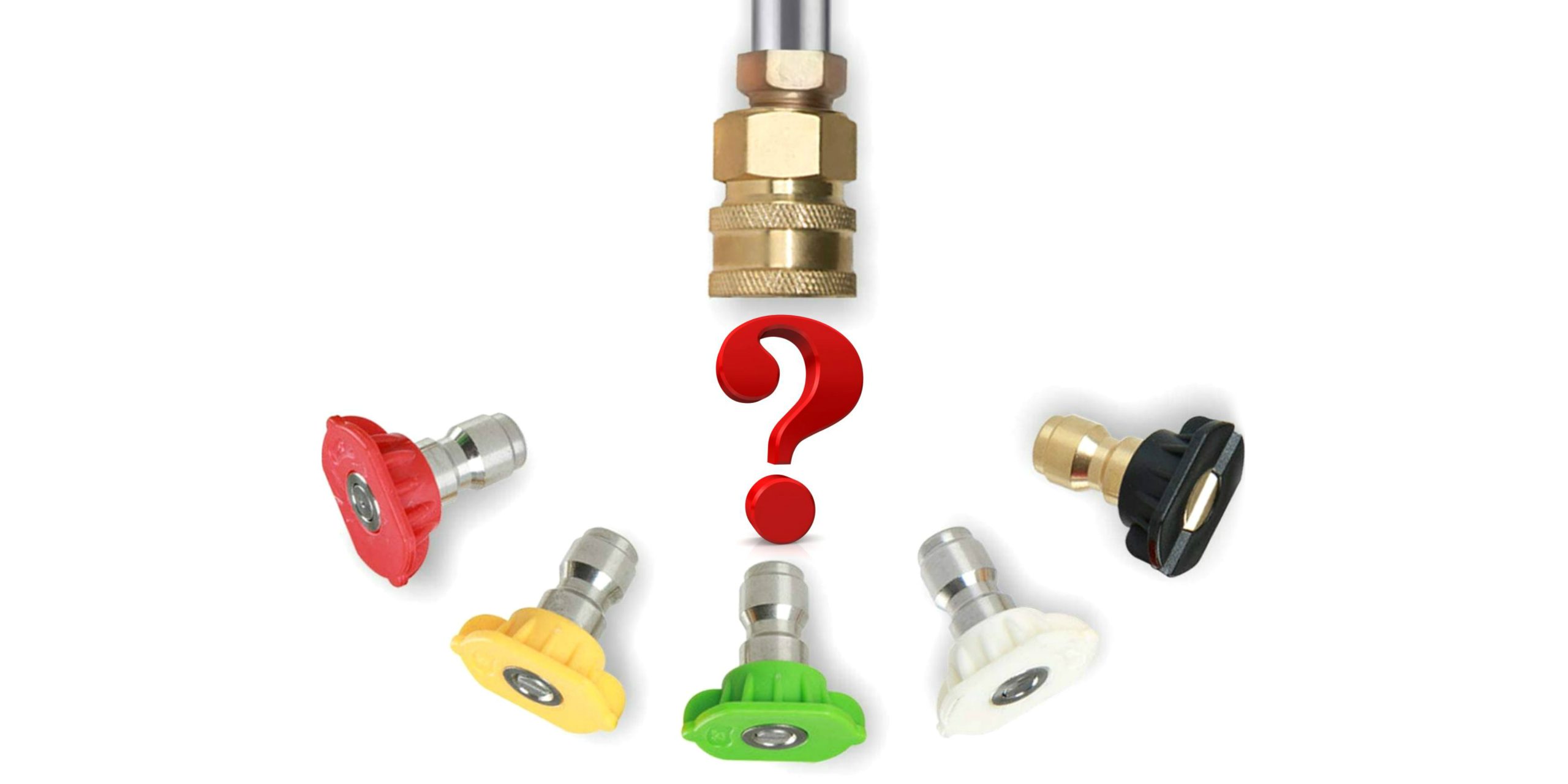
Whether you’re cleaning a driveway, refreshing your home’s siding, or restoring a grimy deck, your pressure washer is only as effective as the nozzle you’re using. That small attachment at the end of your wand determines the pressure, spray pattern, and safety of your cleaning job.
Using the wrong nozzle can mean damaged surfaces, streaky results, or hours of extra work. In this guide, we’ll break down the most common power washing nozzles—and show you which one is best for each task. 🎯
🧠 Understanding Color-Coded Nozzles
Pressure washer nozzles are typically color-coded based on spray angle and pressure output:
| Color | Angle | Pressure | Best For |
|---|---|---|---|
| 🔴 Red | 0° | Max | Removing tough stains from concrete (use with caution) |
| 🟠 Orange | 15° | High | Brick, stone, rust stains, heavy-duty cleaning |
| 🟡 Yellow | 25° | Medium | Siding, decks, fences, walkways |
| 🟢 Green | 40° | Low | Vehicles, windows, outdoor furniture |
| ⚪ White | 65° | Rinse | Soaping or rinsing delicate surfaces |
| 🔵 Black | 65° | Soap | Applying detergent or pre-soak solution |
💡 Rule of thumb: The smaller the angle, the more concentrated and powerful the spray.
Browse Amazon Here For Top Rated Power Washers And Accessories
✅ Nozzle-by-Task Breakdown
Let’s look at which nozzle to use for common pressure washing projects:
🧱 Concrete Driveways & Sidewalks
- Recommended Nozzle: 🔴 Red (0°) or 🟠 Orange (15°)
- Why: Removes oil, gum, tire marks, and algae
- Tip: Use 0° only for spot cleaning; avoid on painted or delicate surfaces
🧼 Wooden Decks and Fences
- Recommended Nozzle: 🟡 Yellow (25°)
- Why: Strong enough to remove grime without gouging wood grain
- Tip: Keep wand 12–18 inches away and follow wood grain to avoid splintering
🏠 Siding (Vinyl, Brick, or Stucco)
- Recommended Nozzle: 🟢 Green (40°)
- Why: Provides a wide spray to prevent damage while still removing dirt and mildew
- Tip: Start from the bottom up when soaping, top down when rinsing
🚗 Cars, Boats, and Outdoor Furniture
- Recommended Nozzle: ⚪ White (65°)
- Why: Gentle enough for painted surfaces and trim
- Tip: Stand at least 3 feet away and rinse thoroughly to avoid soap spots
🧽 Applying Detergents or Pre-Soak
- Recommended Nozzle: 🔵 Black (65°, Soap Nozzle)
- Why: Wide, low-pressure spray draws detergent from the tank
- Tip: Use only with compatible pressure washer models with a detergent tank or siphon
🧪 Specialized Nozzles
💫 Turbo Nozzle (Rotating 0° Tip)
- Spins in a circular motion to create a powerful, cone-shaped spray
- Great for cleaning caked-on mud, rust, or mildew from concrete
- Use with caution—can damage wood, paint, or siding
🧼 Surface Cleaner Attachments
- For driveways and patios—spins two jets under a housing for streak-free, even cleaning
- Prevents zebra striping from wand passes
📏 Adjustable Nozzles
- Twist to change angle (0° to 65°); convenient but less precise than fixed tips
⚠️ Common Nozzle Mistakes to Avoid
❌ Using a 0° tip on siding, wood, or vehicles
❌ Holding any nozzle too close to the surface
❌ Skipping soap nozzle and expecting detergent to spray
❌ Choosing too narrow a spray for delicate areas
❌ Reusing worn or cracked nozzles—they can cause pressure drops or streaks
👷 Pro Tip: Nozzle + PSI = Cleaning Power
Your nozzle affects the spray pattern, but your machine’s PSI (pounds per square inch) and GPM (gallons per minute) still dictate total power.
Even with the right nozzle, using a machine that’s too powerful can cause damage.
🧼 Final Thoughts
Choosing the right power washing nozzle can make the difference between a fast, flawless job—or a frustrating, streaky mess. When in doubt, start with a wider spray and work your way down. Test on a small area, keep your distance, and let the nozzle—and the water—do the hard work for you. 💦🔫✅
Browse Amazon Here For Top Rated Power Washers And Accessories



